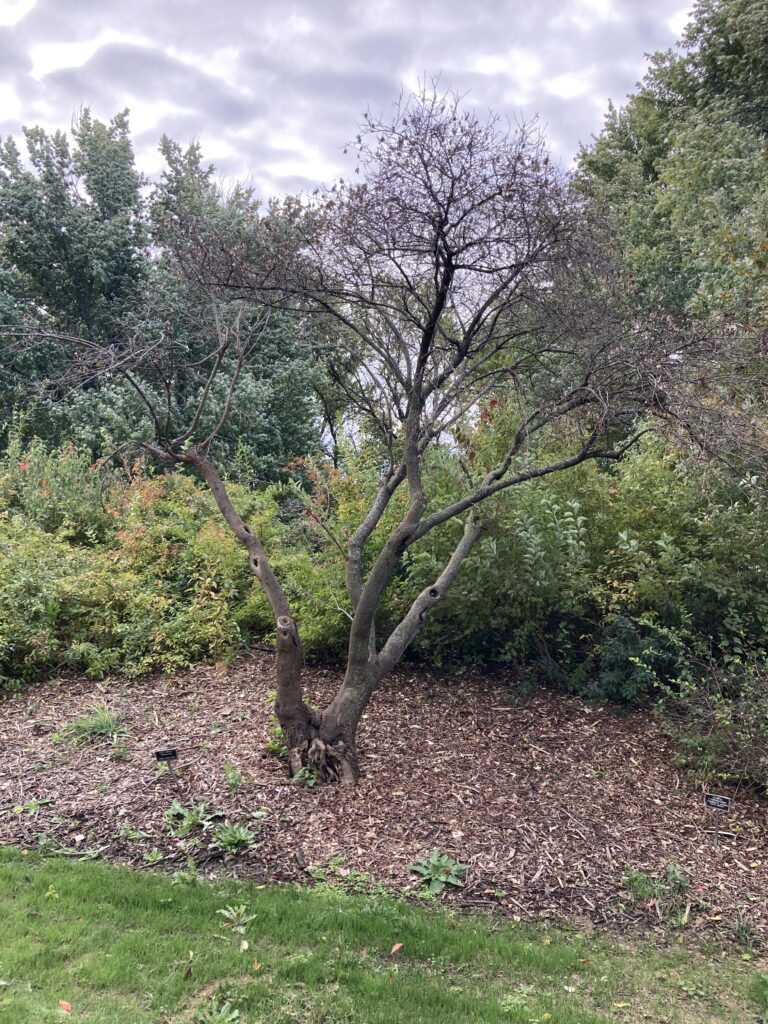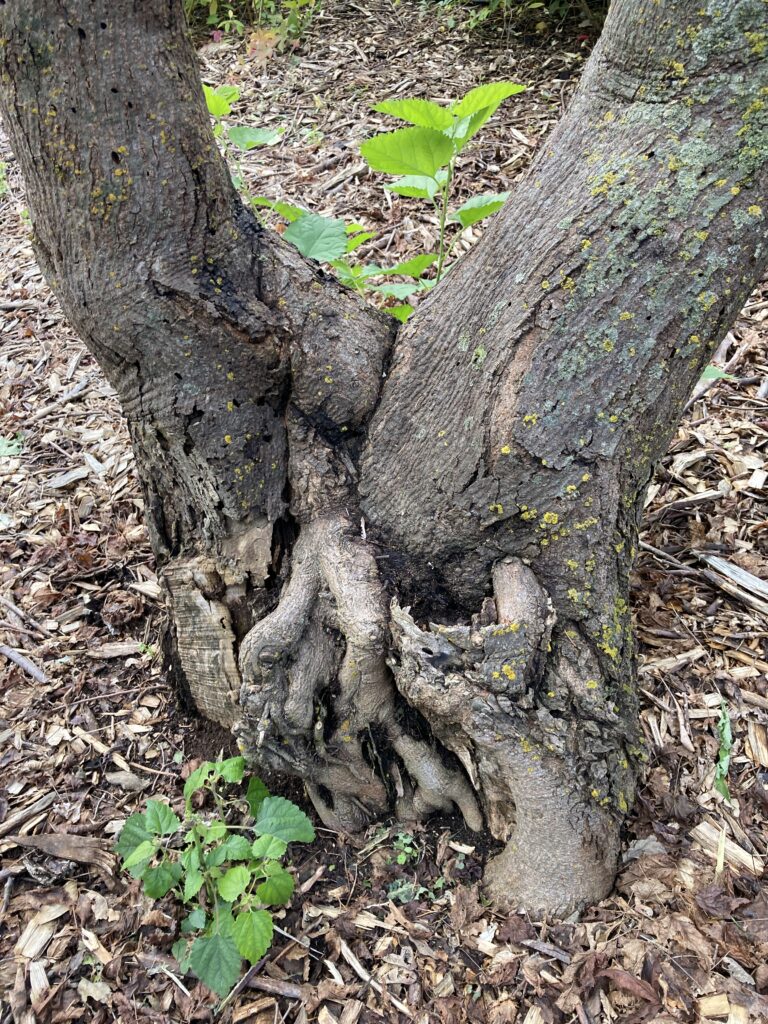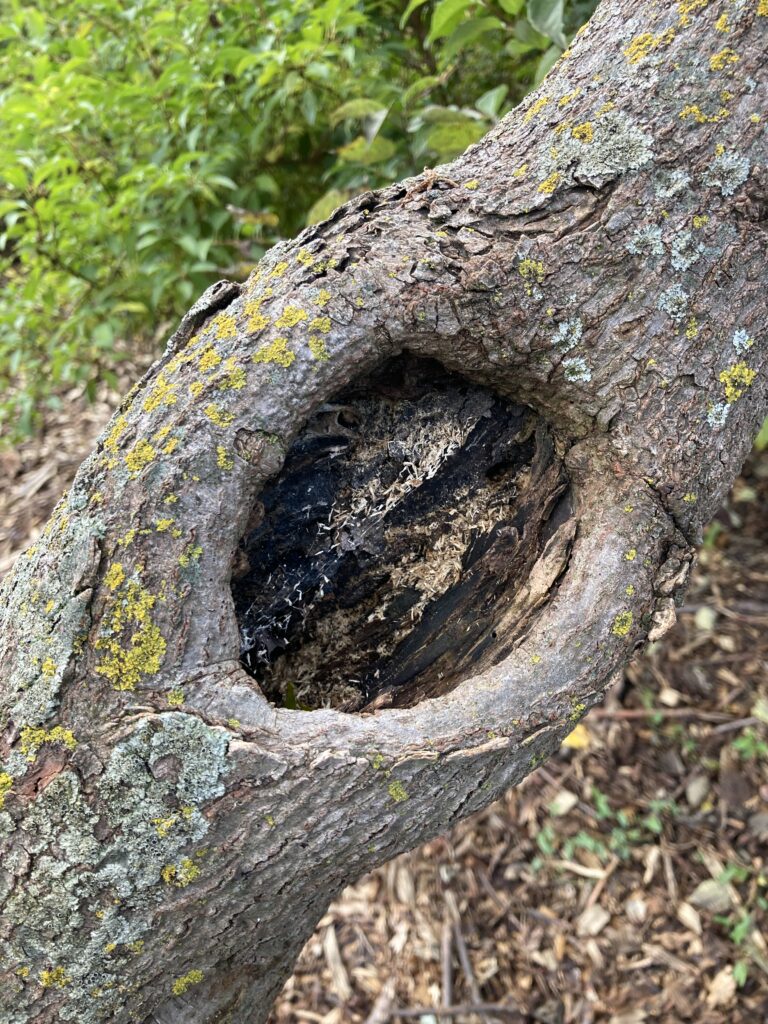If you have been walking at the Arboretum lately you may have noticed some bare spots. Some big bare spots. We have been cutting down dead trees and clearing brush. It can be sad to say goodbye to something that has been a part of our landscape for so many years; casting shade, catching wind, housing birds. But there are lots of great reasons to break out the chainsaw and cut. Not sure when the time is right for tree care? Here are some guidelines.

And don’t go it alone if you can help it — enlist help from family and friends to be spotters and extra hands in case things get dicey.
Disease
A tree harboring disease has got to go. Weather it is in an Arboretum or a neighborhood, diseased trees can sometimes spread their illnesses and cause a lot of damage. Be they mites, fungus, or viral pathogens, keep an eye out for health problems. Certain diseases, like pine wilt, that are spread by nematodes or beetles require the burning of affected wood to prohibit the spread of the disease to other trees. Be kind to your neighbors and dispose of wood properly to avoid contagion.
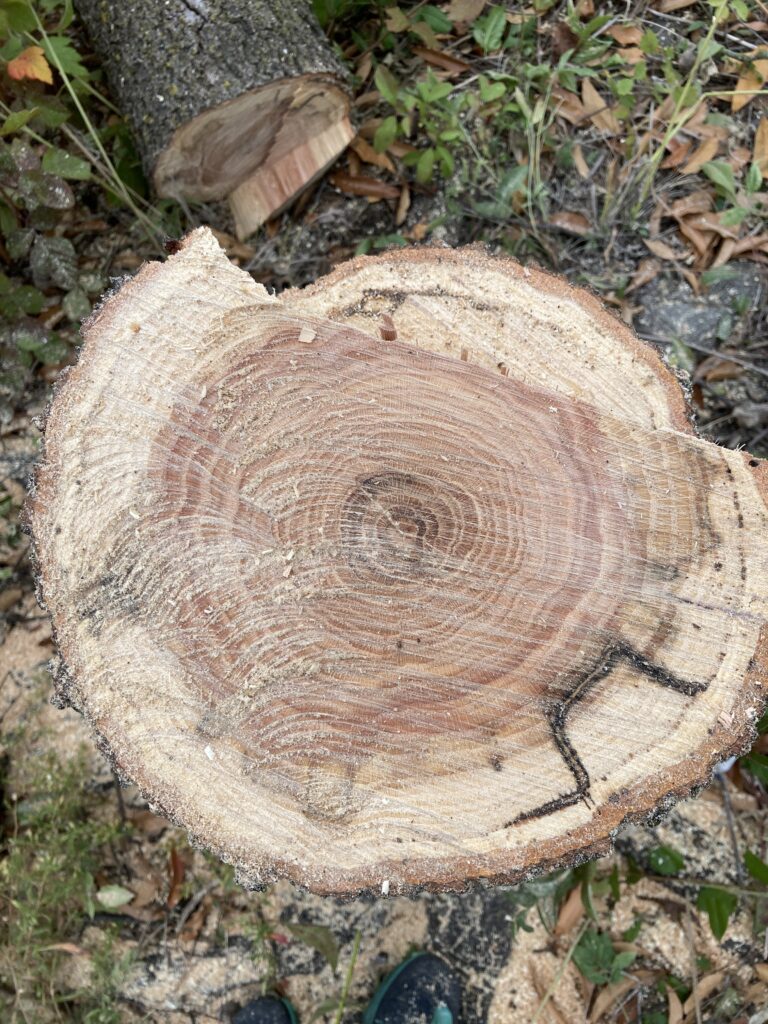
Crowding
A good tree in a bad place is not a good tree at all. We have lots of volunteer trees around the Arboretum thanks to a healthy squirrel population. But not all these saplings live to see old age. We cut truckloads of volunteer trees, even desirable oak and maple species, if they aren’t in the right location. Our goal here at the Arb is to create a naturalistic, not exactly ‘natural’ environment. This means curating and editing where trees are allowed to grow, and what species we want to showcase. Because our prairie biome depends on fire and grazing to keep woody species at bay, any area not exposed to those controls turns into an unmanageable forest pretty quick! In your own yard, choose carefully the species and placement of the trees you allow to sprout, and get rid of the rest. This will not only create a more aesthetically pleasing affect, it also allows you to eliminate non-native or invasive species.
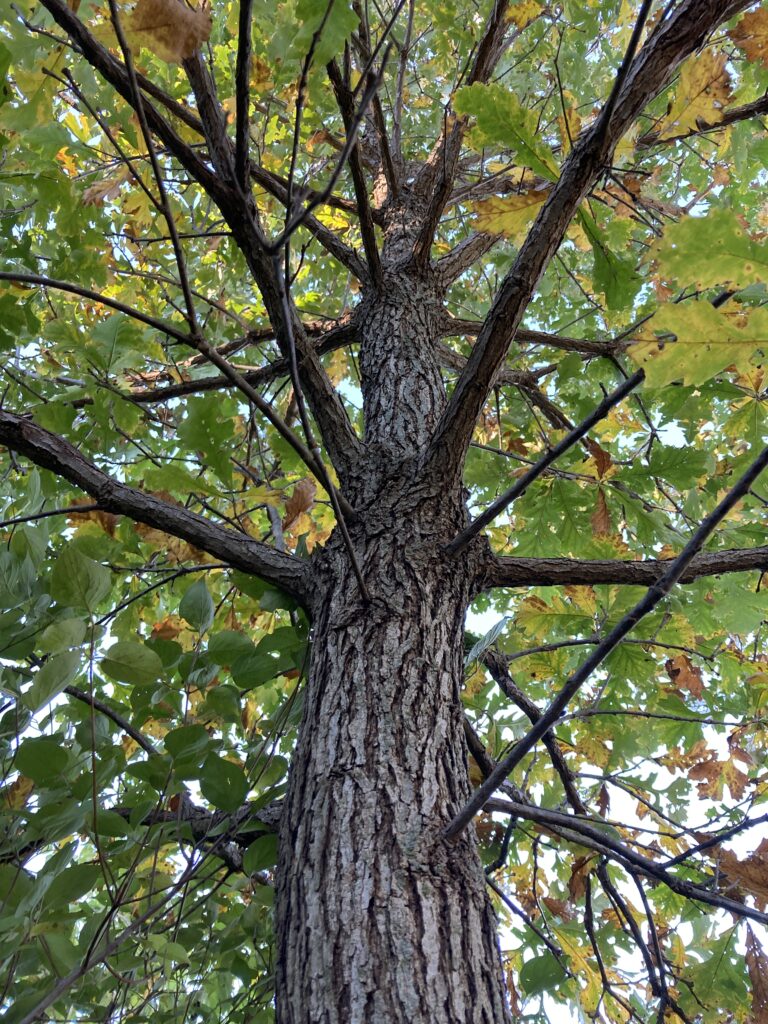
Damage, Age, and Safety
We all get old. And certain tree species don’t age gracefully. From ice storm damage to weak wood, geriatric trees pose a special maintenance dilemma. How to preserve the healthy part of the tree, the shape, and the form, but cut out the dead? I am a lassiez-faire arborist, meaning I prefer to leave a bit of dead wood whenever possible. If the limb is not diseased and does not pose a hazard to nearby trees, why not leave it as habitat? Cavity nesting birds need dead wood to make their nests out of, and insects make their home in there, becoming food for hungry woodpeckers and chickadees. However, if limbs are dangling precariously or pose a safety hazard near structures or walkways, it must be cut immediately.

